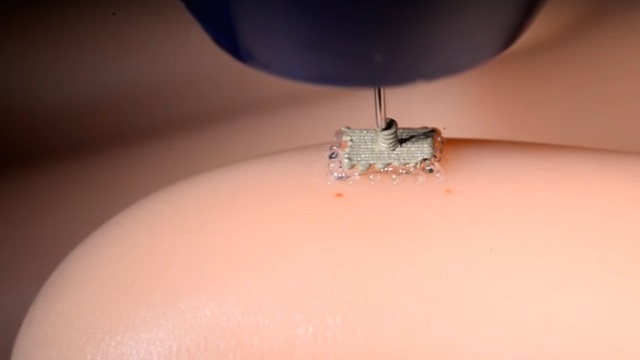
Engineers at the University of Minnesota have developed a new type of tactile sensor. These sensors mimic the look and feel of human skin, and could one day allow robots to experience the sensation of touch.
The 3D-printed sensors are stretchable, allowing them to be altered as needed. Robots using the skin would be more sensitive to their environment, and able to perform incredibly delicate tasks as a result.
“This stretchable electronic fabric we developed has many practical uses. Putting this type of ‘bionic skin’ on surgical robots would give surgeons the ability to actually feel during minimally invasive surgeries, which would make surgery easier instead of just using cameras like they do now. These sensors could also make it easier for other robots to walk and interact with their environment.”
The ‘fabric’ was made using a one-of-a-kind 3D printer at the University of Minnesota. The printer uses multiple types of ‘ink’ to build up layers of the device. The layers include a base of silicone, two layers of electrodes, and a pressure sensor shaped like a coil. The entire construction is held together by a sacrificial layer that allows all the others to set. These layers create the device that would allow robots to interact with their environment on a whole new level.
But robots wouldn’t be the only ones to benefit from this discovery: the next step is actually grafting devices directly onto human skin. This technology would have countless applications in a variety of fields. Those with medical issues could have their devices directly on their skin, constantly monitoring their vitals. Soldiers in the field could have their locations perfectly pinpointed, and even use the on-skin devices to detect dangerous chemicals in the surrounding area.
Because of the unique design of the printer and the tools used to create this 3D-printed skin, the manufacturing aspect is actually built directly into the process. This means that the scientists don’t have to spend to worrying about mass-production, and can instead focus on the numerous applications for this revolutionary new technology.
